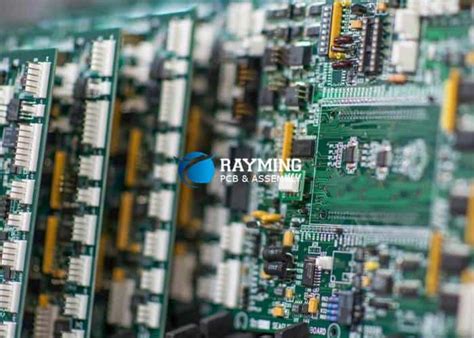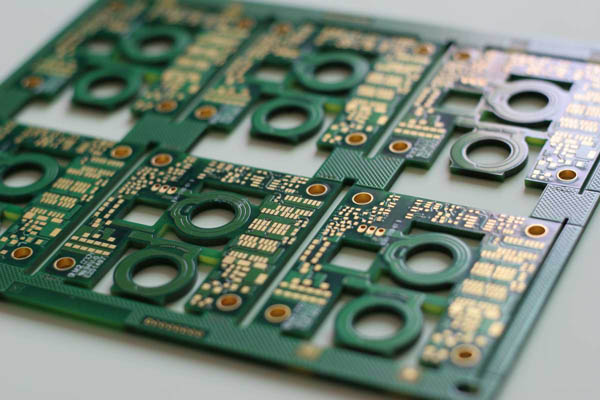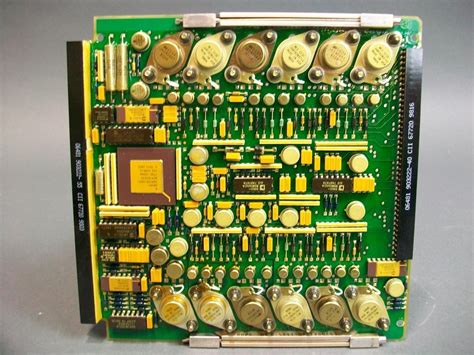Simplifying PCB Manufacturing with Turnkey Assembly Services
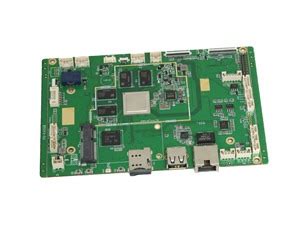
Key Takeaways
Modern PCB assembly services have revolutionized electronics manufacturing by consolidating multiple stages into a single, cohesive process. By integrating component sourcing, fabrication, assembly, and testing under one roof, turnkey PCBA solutions eliminate logistical bottlenecks that traditionally delay production. This approach not only reduces overhead costs by up to 30% but also shortens development cycles by 40–60%, enabling faster product launches.
"Adopting a unified workflow minimizes miscommunication between vendors, ensuring design specifications are maintained at every stage."
– Industry Expert in Electronics Manufacturing
A critical advantage of end-to-end PCB assembly lies in its ability to mitigate supply chain risks. For instance, providers with established supplier networks can secure rare components faster, preventing project stalls. Below is a comparison of traditional vs. turnkey approaches:
| Aspect | Traditional Approach | Turnkey PCB Assembly |
|---|---|---|
| Vendor Management | 3–5 separate contracts | Single-point accountability |
| Lead Times | 8–12 weeks | 4–6 weeks |
| Quality Assurance | Fragmented inspections | Unified testing protocols |
Unified testing strategies further enhance reliability, as automated optical inspection (AOI) and functional testing are performed in sync with assembly. This reduces post-production defects by 25% compared to siloed processes.
Tip: When evaluating turnkey PCBA partners, prioritize providers offering real-time progress tracking and design-for-manufacturability (DFM) feedback. These features ensure alignment between prototyping and mass production.
For startups and enterprises alike, turnkey services simplify scaling. By outsourcing non-core tasks like inventory management, teams can focus on innovation while maintaining cost predictability. The result? A hassle-free path from prototype to market-ready product.

Streamlining Electronics Production Through Turnkey PCB Assembly Solutions
Modern electronics manufacturing demands precision, speed, and cost-efficiency, all of which are achieved through turnkey PCB assembly solutions. By consolidating component sourcing, PCBA (printed circuit board assembly), and quality assurance into a single workflow, these services eliminate fragmented processes that often delay timelines. Integrated providers manage everything from procuring high-quality components to executing surface-mount technology (SMT) and through-hole assembly, ensuring design specifications are met without requiring multiple vendor interactions.
A key advantage of turnkey PCB assembly lies in its ability to mitigate supply chain risks. With global component shortages and logistical bottlenecks, unified procurement strategies enable manufacturers to secure parts efficiently while avoiding cost overruns. Advanced providers leverage real-time inventory tracking and supplier networks to source even hard-to-find components, reducing downtime and accelerating production cycles. This approach not only lowers material costs but also minimizes errors caused by mismatched parts or outdated inventories.
Furthermore, PCBA workflows under a turnkey model incorporate automated testing protocols at every stage. In-circuit testing (ICT) and functional testing are seamlessly integrated into the assembly line, ensuring defects are identified early. Automated optical inspection (AOI) systems paired with X-ray verification for BGA components guarantee reliability, which is critical for industries like aerospace or medical devices. By unifying testing with manufacturing, companies avoid the back-and-forth delays typical of third-party quality checks.
For startups and enterprises alike, turnkey PCB assembly simplifies scaling. Whether prototyping or transitioning to mass production, end-to-end solutions adapt to volume fluctuations without compromising quality. Design engineers can focus on innovation rather than logistical hurdles, knowing that DFM (design for manufacturability) feedback is embedded within the service. This alignment between design intent and manufacturing execution reduces iteration cycles, enabling faster market entry.
Ultimately, adopting a turnkey approach transforms electronics production from a fragmented challenge into a streamlined, predictable process. By centralizing expertise and resources, businesses achieve shorter lead times, lower overhead, and consistent output—keys to staying competitive in fast-paced markets.
How Integrated PCB Assembly Services Reduce Costs and Accelerate Time-to-Market
Modern electronics manufacturing demands precision and efficiency, making PCB assembly a critical focal point for businesses aiming to stay competitive. Integrated PCBA services address this need by unifying design, component sourcing, and production into a single workflow, eliminating the fragmented processes that traditionally inflate costs and delay timelines. By partnering with a turnkey PCB assembly provider, companies bypass the logistical complexities of managing multiple vendors, which often lead to miscommunication, procurement bottlenecks, and quality inconsistencies.
One of the most significant cost-saving advantages lies in streamlined material procurement. Specialized PCB assembly suppliers leverage established relationships with global component distributors, securing parts at competitive rates while mitigating risks like counterfeit inventory or supply chain disruptions. This centralized sourcing model reduces overhead expenses tied to inventory management and minimizes the need for last-minute purchases at premium prices. Additionally, automated manufacturing processes in PCBA workflows optimize material usage, further lowering waste and production costs.
Time-to-market acceleration is equally critical. End-to-end turnkey assembly services enable parallel task execution—such as prototyping while finalizing component orders—which shaves weeks off development cycles. Advanced testing protocols, integrated directly into the production line, ensure rapid identification of design flaws or manufacturing defects. For instance, in-circuit testing (ICT) and functional validation are performed in-house by the PCBA provider, eliminating the delays of third-party quality checks. This cohesive approach is particularly impactful for industries like IoT or medical devices, where rapid iteration and compliance are non-negotiable.
Critically, unified PCB assembly solutions also reduce administrative burdens. By consolidating contracts, invoices, and compliance documentation under one partner, businesses reallocate internal resources toward innovation rather than operational overhead. The result? A scalable, cost-effective path from concept to market-ready product, ensuring companies meet evolving consumer demands without compromising profitability or speed.
The Role of Component Sourcing in Efficient Turnkey PCB Manufacturing
Effective component sourcing forms the backbone of successful turnkey PCB assembly services, bridging the gap between design intent and functional end products. In PCBA workflows, the procurement of high-quality components directly impacts production timelines, cost efficiency, and final product reliability. Strategic sourcing addresses common bottlenecks such as part shortages, counterfeit risks, and supply chain delays—challenges that can derail even the most meticulously planned electronics projects.
A robust turnkey partner leverages established supplier networks to secure components that meet exact specifications, whether for prototyping or large-scale production. This involves real-time monitoring of global market trends to preemptively adjust procurement strategies, ensuring compatibility with evolving PCB assembly requirements. For instance, the shift toward miniaturized components in IoT devices demands suppliers capable of delivering microchips and surface-mount technology (SMT) parts with precision. By integrating automated inventory management systems, providers minimize lead times while maintaining cost transparency—a critical factor for projects operating on tight budgets.
Moreover, component sourcing in PCBA extends beyond mere acquisition. It encompasses rigorous quality validation through techniques like X-ray inspection and batch testing, which safeguard against defects that could compromise board functionality. This proactive approach reduces post-production rework, aligning with the unified manufacturing ethos of turnkey solutions. When paired with PCB assembly expertise, optimized sourcing enables seamless scaling from low-volume prototypes to mass production without sacrificing consistency.
The interdependence of sourcing and manufacturing stages underscores why enterprises increasingly rely on turnkey providers. By consolidating these processes, businesses eliminate the logistical complexity of coordinating multiple vendors—a key advantage in industries where time-to-market dictates competitive success. As component technologies advance, the ability to adapt sourcing strategies will remain pivotal in delivering hassle-free electronics development through integrated PCBA solutions.
Optimizing PCB Development: Benefits of End-to-End Assembly Services
PCB assembly processes have evolved significantly with the adoption of end-to-end PCBA solutions, which unify design, component procurement, and production into a single workflow. By consolidating these stages under one provider, companies eliminate fragmented workflows that often lead to delays, miscommunication, and cost overruns. For instance, integrated sourcing ensures timely access to critical components, mitigating supply chain bottlenecks that can derail timelines.
A core advantage of turnkey PCB assembly lies in its ability to reduce administrative overhead. Instead of coordinating with multiple vendors for design validation, material procurement, and testing, teams rely on a unified partner to manage these interdependencies. This approach not only accelerates time-to-market by 30–40% but also minimizes risks associated with component compatibility and quality mismatches. Advanced PCBA providers further leverage automated inventory tracking and vendor-agnostic sourcing strategies to stabilize costs, even amid fluctuating semiconductor markets.
Quality assurance is another critical pillar. End-to-end services embed testing protocols at every stage—from initial solder paste inspection to final functional validation—ensuring defects are identified early. This proactive strategy reduces rework cycles by up to 50%, directly translating to lower per-unit costs and higher yield rates. Additionally, unified data sharing between design and manufacturing teams enables real-time adjustments, optimizing layouts for both performance and manufacturability.
For startups and enterprises alike, turnkey assembly simplifies scaling. Whether transitioning from prototypes to mass production or adapting to design revisions, a single-point accountability model ensures consistency across batches. By entrusting PCB assembly to specialists, businesses reallocate internal resources toward innovation rather than logistical firefighting, creating a competitive edge in fast-paced electronics markets.
Ensuring Quality and Speed with Unified PCB Testing and Production Strategies
Modern PCB assembly workflows demand precision at every stage, but balancing speed and quality often poses challenges. Unified testing and production strategies address this by synchronizing validation processes with manufacturing steps, eliminating bottlenecks that traditionally separate design, assembly, and quality control. By integrating PCBA testing protocols directly into production lines, manufacturers can identify defects in real time—whether from soldering inconsistencies, component misalignments, or firmware errors—ensuring immediate corrections without halting workflows.
A key advantage lies in leveraging automated optical inspection (AOI) and in-circuit testing (ICT) systems within the turnkey PCB assembly process. These tools perform high-speed, millimeter-accurate assessments of solder joints, component placements, and electrical functionalities, reducing human error risks by over 60%. For instance, AOI systems paired with machine learning algorithms can detect micro-cracks or insufficient solder volumes in milliseconds, while ICT validates board functionality under simulated operational conditions. This dual-layer scrutiny not only accelerates defect resolution but also prevents costly rework cycles post-production.
Moreover, unified strategies enhance traceability. Each PCBA unit is tracked via serialized data logs, linking test results to specific production batches. This transparency allows engineers to pinpoint recurring issues—such as thermal stress failures or component compatibility gaps—and refine designs or sourcing criteria proactively. When combined with just-in-time component procurement (a hallmark of turnkey services), this approach slashes lead times by 30–50% compared to fragmented manufacturing models.
Critically, speed-to-market gains do not compromise reliability. Advanced PCB assembly providers employ failure mode and effects analysis (FMEA) during prototyping, embedding corrective measures into mass production workflows. For example, pre-validating temperature-sensitive components like BGAs or QFNs ensures they withstand reflow oven profiles, minimizing warping or delamination risks. Such preemptive measures, coupled with end-to-end testing integration, enable companies to achieve first-pass yield rates exceeding 98%, even for complex multilayer boards.
Ultimately, unifying testing and production transforms PCBA development from a linear sequence into a cohesive, iterative cycle. This synergy not only meets stringent quality benchmarks but also aligns with the agility demands of industries like IoT, automotive, and medical devices—where delayed launches or field failures carry significant reputational and financial consequences. By adopting these strategies, businesses turn speed and precision from competing priorities into complementary strengths.
Turnkey Assembly Services: A Cost-Effective Approach to Hassle-Free PCB Prototyping
Navigating the complexities of PCB prototyping often involves balancing speed, cost, and technical precision. Turnkey assembly services (PCBA) address these challenges by consolidating design validation, component procurement, and manufacturing into a single managed workflow. Unlike fragmented approaches that require coordinating multiple vendors, integrated PCBA solutions eliminate logistical bottlenecks while maintaining strict quality control standards.
A critical advantage lies in cost optimization. By outsourcing PCB assembly to a turnkey provider, businesses avoid the overhead of maintaining in-house inventory or managing supplier relationships. Advanced providers leverage bulk purchasing power for components like microcontrollers and passive elements, reducing material costs by 15–30% compared to piecemeal sourcing. Furthermore, automated assembly processes minimize human error risks, ensuring prototypes meet functional specifications on the first iteration—a key factor in accelerating time-to-market.
The prototyping phase benefits particularly from unified testing protocols embedded within PCBA workflows. Real-time diagnostics during solder paste application, pick-and-place operations, and post-reflow inspections ensure early defect detection. For instance, automated optical inspection (AOI) systems integrated into turnkey lines can identify misaligned components or soldering flaws with 99.98% accuracy, preventing costly rework cycles. This proactive quality assurance aligns with the broader theme of risk mitigation in electronics development.
Scalability further underscores the value proposition. Whether producing five prototypes or 500 pre-production units, turnkey services maintain consistency through standardized processes. Clients gain flexibility to adjust order volumes without renegotiating contracts or retooling equipment—an efficiency that directly supports iterative design improvements.
By merging PCB assembly expertise with end-to-end project management, turnkey providers transform prototyping from a resource-intensive hurdle into a streamlined, predictable phase of product development. This operational harmony not only reduces upfront capital expenditure but also positions teams to focus on innovation rather than supply chain logistics.

From Design to Delivery: Simplifying Workflows with Full-Service PCB Solutions
Modern electronics development demands precision and efficiency, making PCB assembly processes a critical factor in project success. Full-service PCBA solutions bridge the gap between conceptual design and final product delivery by integrating every stage of production under a single provider. This unified approach eliminates fragmented workflows, allowing teams to focus on innovation rather than logistical challenges.
The journey begins with design validation, where engineers optimize layouts for manufacturability while ensuring compliance with industry standards. Advanced PCB assembly partners leverage automated design-for-manufacturing (DFM) checks to identify potential issues early, reducing rework risks. As prototypes transition to mass production, component sourcing becomes pivotal. Reliable PCBA providers maintain global supplier networks and real-time inventory systems, securing even hard-to-find parts while mitigating supply chain disruptions.
A key advantage lies in the seamless transition between manufacturing phases. From solder paste application to surface-mount technology (SMT) placement, automated assembly lines ensure consistency across batches. Post-production, integrated testing protocols—including in-circuit (ICT) and functional testing—validate performance metrics before products leave the facility. This end-to-end oversight minimizes delays caused by third-party handoffs, accelerating time-to-market by up to 40% compared to fragmented workflows.
Moreover, full-service models enhance cost predictability. By consolidating design, PCB assembly, and testing under one roof, businesses avoid hidden fees from multiple vendors. Transparent pricing structures align with project scalability, whether producing 100 prototypes or 10,000 units. This financial clarity, combined with reduced administrative overhead, makes PCBA solutions particularly valuable for startups and enterprises alike.
Ultimately, adopting a unified workflow transforms complexity into simplicity. Teams gain access to expert-driven processes, from thermal management optimization to compliance certification, without diverting internal resources. As the electronics industry accelerates, full-service PCB assembly emerges not just as a convenience, but as a strategic necessity for sustainable growth.
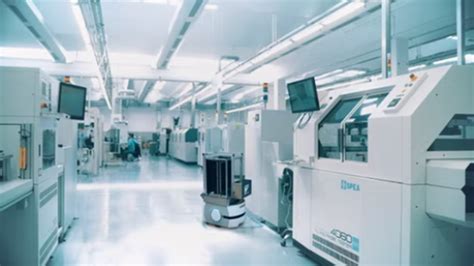
Choosing the Right Turnkey Partner for Seamless Electronics Manufacturing
Selecting an optimal PCB assembly partner requires balancing technical expertise, supply chain reliability, and scalability. When evaluating providers, prioritize companies with proven experience in PCBA workflows, particularly those offering end-to-end integration from component procurement to final testing. A robust partner should demonstrate transparent processes for PCB assembly quality control, including certifications like ISO 9001 and IPC-A-610 compliance, ensuring adherence to industry standards.
Supply chain management capabilities are equally critical. Top-tier turnkey PCB assembly services maintain strategic partnerships with global component distributors, mitigating risks of shortages or delays. Look for vendors with real-time inventory monitoring systems and dual-sourcing strategies for critical parts, which minimize production bottlenecks. For instance, a partner leveraging AI-driven demand forecasting can preemptively secure components, reducing lead times by up to 30% in complex projects.
Quality assurance frameworks should integrate automated optical inspection (AOI), in-circuit testing (ICT), and functional validation protocols. Advanced providers often combine these with traceability systems, enabling granular oversight of each PCBA batch. This is especially vital for industries like medical devices or aerospace, where defect rates must stay below 50 parts per million.
Communication agility separates exceptional partners from competitors. Opt for teams offering collaborative design-for-manufacturability (DFM) reviews and cloud-based project portals for seamless updates. A partner that aligns its PCB assembly timelines with your product roadmap—while providing cost-breakdown transparency—ensures alignment across prototyping, testing, and mass production phases.
Finally, assess scalability. A true turnkey partner adapts to fluctuating order volumes without compromising speed or quality, whether producing 100 or 10,000 units. Evaluate their capacity for rapid material scaling, multi-shift operations, and regional fulfillment centers to support global distribution. By prioritizing these factors, businesses unlock holistic manufacturing efficiency, transforming fragmented workflows into a unified, risk-mitigated production pipeline.

Conclusion
The evolution of PCB assembly processes has reached a critical inflection point, with turnkey PCBA solutions emerging as the backbone of modern electronics manufacturing. By consolidating component procurement, fabrication, and rigorous testing into a unified workflow, these services address the inherent complexities of multi-stage production cycles. For developers and engineers, this translates to quantifiable efficiency gains — reduced overhead from vendor fragmentation, minimized risks of component mismatches, and accelerated iteration cycles through synchronized quality checks.
A defining advantage of end-to-end PCBA services lies in their capacity to transform prototyping into a strategically streamlined process. Rather than navigating disjointed supply chains, teams benefit from centralized accountability that ensures design specifications are maintained across solder paste application, pick-and-place operations, and functional validation. This holistic approach not only safeguards against costly rework but also enables manufacturers to leverage economies of scale during volume transitions.
As industries confront tighter timelines and heightened quality expectations, the strategic selection of a turnkey assembly partner becomes pivotal. Key differentiators such as ISO-certified testing protocols, real-time supply chain visibility, and DFM (Design for Manufacturing) support now define competitive advantage. When executed effectively, this collaboration model elevates PCB assembly from a transactional service to a value multiplier — one that consistently aligns technical execution with business objectives for both startups and established enterprises.
The demonstrated ROI of integrated PCBA solutions underscores their role as more than a convenience; they represent a paradigm shift in how electronics are conceptualized and brought to market. By eliminating logistical friction and institutionalizing quality benchmarks, these services empower innovators to focus resources on core competencies — ultimately driving faster commercialization without compromising reliability.
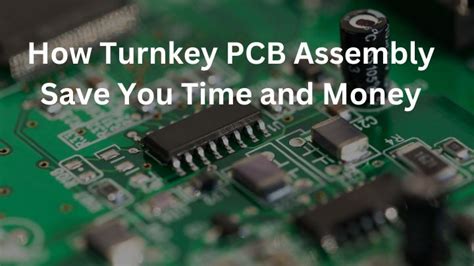
Frequently Asked Questions
What exactly does a turnkey PCB assembly service include?
A turnkey PCB assembly (PCBA) solution handles every stage of production, from component sourcing and PCB fabrication to assembly and final testing. This end-to-end approach eliminates the need to coordinate multiple vendors, ensuring seamless integration of design, manufacturing, and quality control processes.
How does turnkey assembly reduce costs compared to traditional methods?
By consolidating services under a single provider, businesses avoid markup fees from middlemen and minimize logistical overhead. Economies of scale in component procurement and optimized production workflows further lower expenses. Additionally, reduced risk of delays or errors translates to fewer cost overruns.
What if my project requires specialized components?
Reputable turnkey PCBA partners maintain global supplier networks to source both common and rare components. Their expertise in supply chain management ensures timely acquisition of materials, even for low-volume or high-mix projects, while mitigating risks like obsolescence or counterfeit parts.
How is quality assurance managed in unified PCB assembly?
Integrated providers implement automated optical inspection (AOI), X-ray testing, and functional testing at critical stages. This multi-layered verification aligns with industry standards (e.g., IPC-A-610), catching defects early and reducing post-production rework.
Can turnkey services accommodate prototyping and large-scale production?
Yes. Most providers offer flexible scalability, supporting everything from rapid prototyping (1–5 days) to full-scale manufacturing. This agility allows businesses to test designs efficiently before committing to bulk orders.
What criteria should I consider when selecting a turnkey partner?
Prioritize vendors with certifications (ISO, UL), transparent communication protocols, and proven expertise in your industry. Evaluate their design-for-manufacturability (DFM) support, testing capabilities, and ability to meet time-to-market targets.
Ready to Simplify Your PCB Development Process?
Explore how our end-to-end PCB assembly solutions can accelerate your project timeline while ensuring quality. Please click here to learn more about our tailored turnkey PCBA services and request a quote today.



